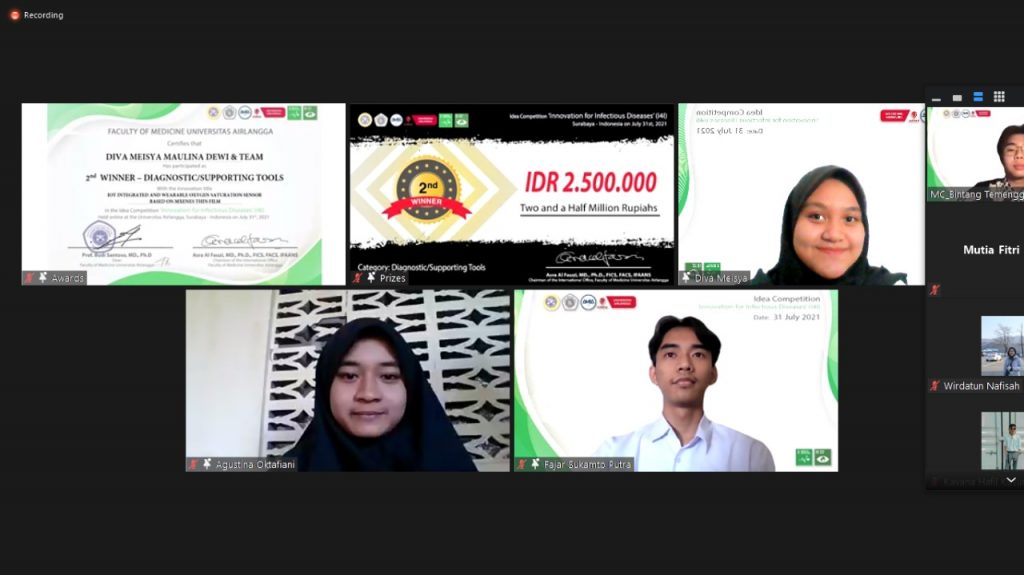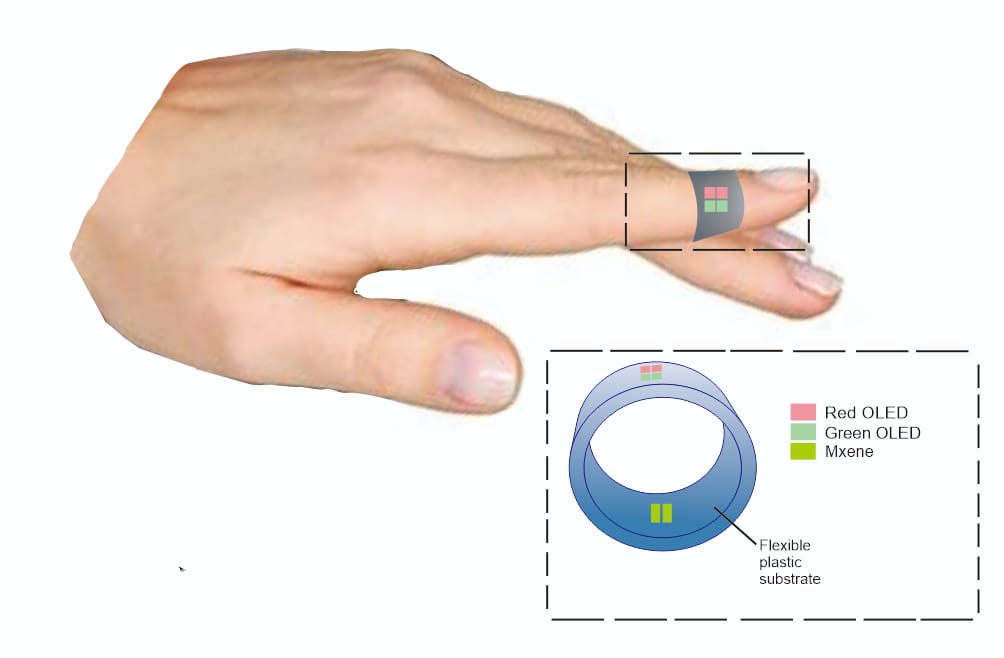UNAIR NEWS – The lack of oxygen saturation monitoring of self-isolated patient inspired four students of the Faculty of Advanced Technology and Multidiscipline (FTMM) Universitas Airlangga to propose an idea of an oxygen saturation sensor integrated with the Internet of Things (IoT) from a thin film nanomaterial, MXene material. Within 15 days of working on the report, the four students from the Class of 2020 Nanotechnology Engineering Study Program, Diva Meisya Maulina Dewi, Agustina Oktafiani, Fajar Sukamto Putra, and Zuhra Mumtazah, won Second Place in the Diagnostic/Supporting Tools category at Idea Competition’ Innovation for Infectious Disease (I4I)’, an international event organized by the Faculty of Medicine (FK) UNAIR.
Contacted by UNAIR NEWS on August 4, 2021, Diva Meisya, as the team leader, explained that the dropping saturation level below 90 percent without symptoms of shortness of breath during self-isolation was the main concern of this innovation. “The sensor is directly integrated into the nearest hospital or health facility so that it will quickly provide first aid to patients,” said Diva.
Oxygen saturation sensor acts as telemedicine and controller. Diva said the sensor composed of a thin film MXene layer is connected to a microcontroller and a ring-shaped wifi module. The sensor mounted on a finger will detect the oxygen saturation in the blood. The microcontroller then receives the signal to be forwarded to the database so that the user can access it.
“The way MXene detects oxygen saturation, based on the research of Khan et al , (2018), each pixel of the ROA consists of Red OLED, NIR, and OPD, each of which will be connected to the Analog Front End (AFE). All of these components are connected to the microcontroller and then accessed by the user,” explained Diva, who is keen on Nanomedicine.

In detail, Red OLED, NIR and OPD are rays with specific waves which can retrieve data of oxyhemoglobin and deoxyhemoglobin. “All these components are connected to the microcontroller as a signal receiver, then forwarded to the user,” she said.
Under the guidance of FTMM lecturers Ilma Amalina, S.Si, M.Si, PhD and Tahta Amrillah, S.Si, M.Sc, Ph.D., the team targets funding so that the idea can be realized. Diva encouraged other students to continue to innovate. Inspiration for innovation is around us, from problems and issues faced by the community. (*)
Author: Dimar Herfano
Editor: Feri Fenoria





